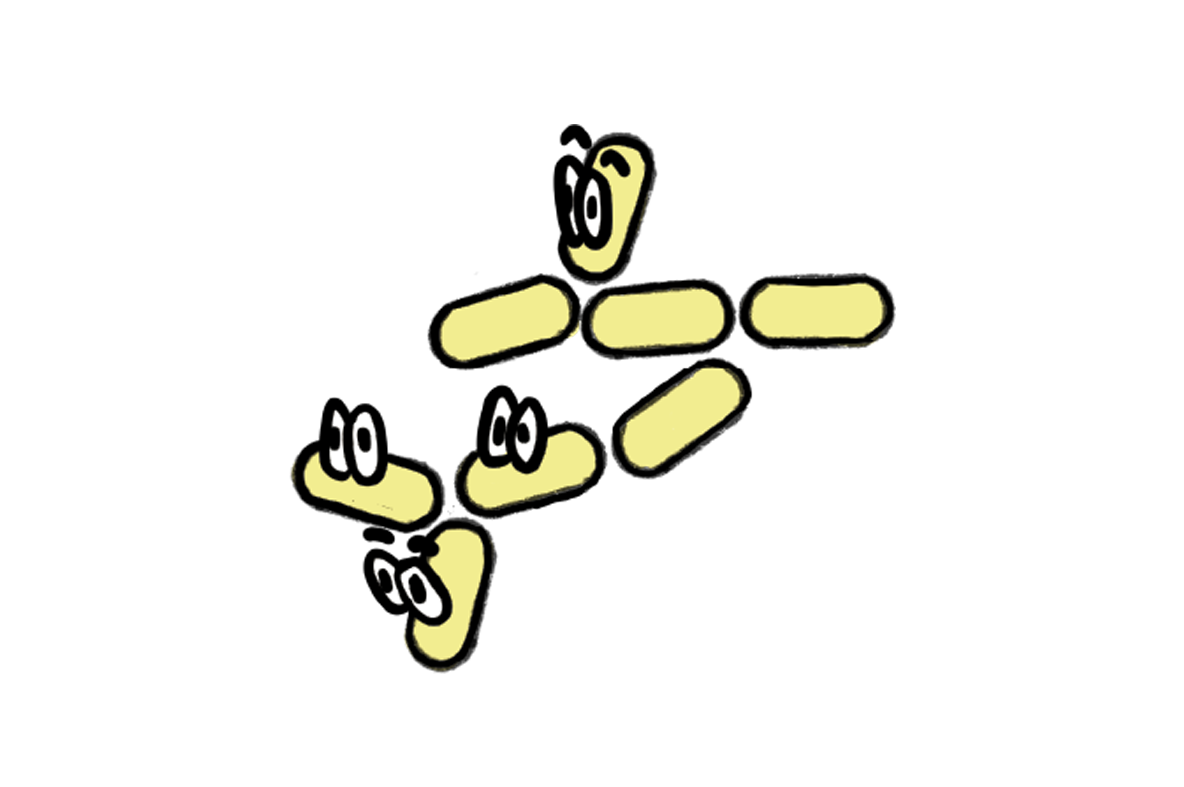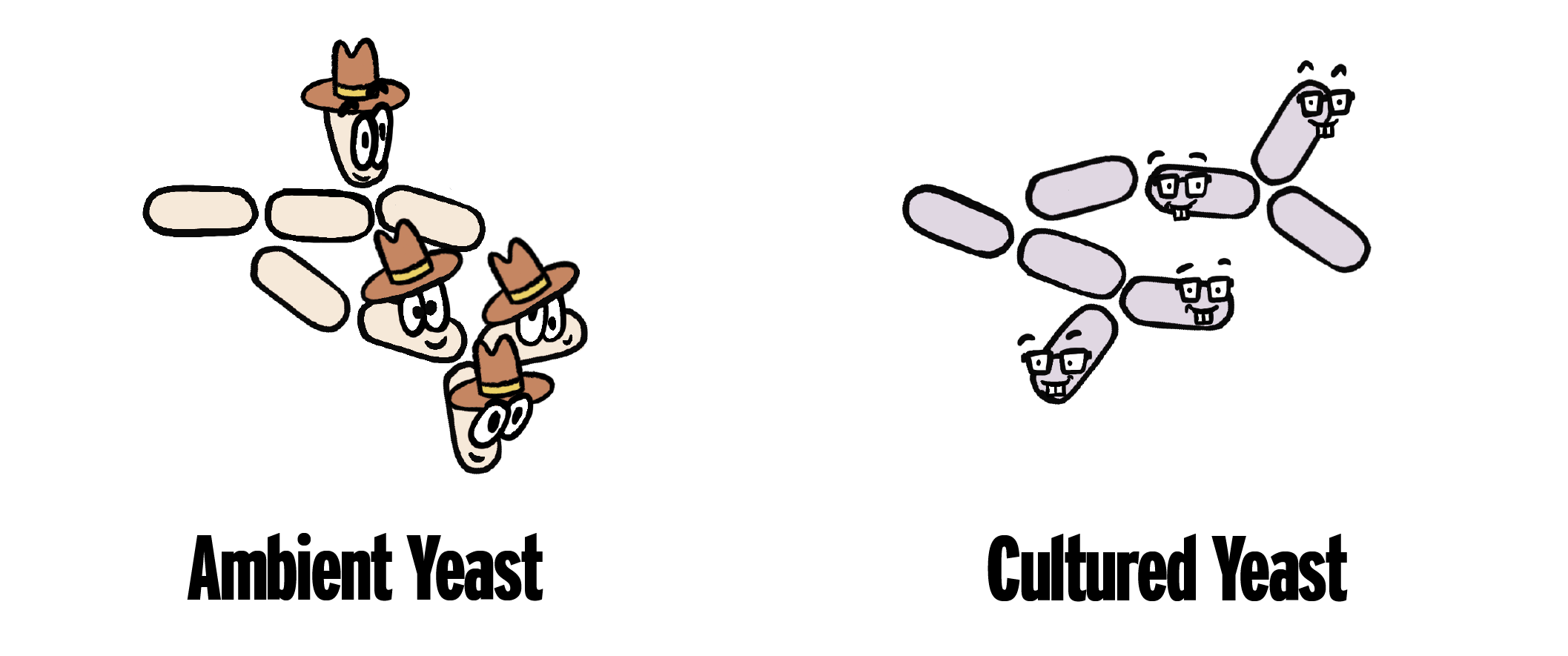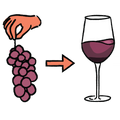

Yeast is responsible for the fermentation of grape sugar into alcohol! It can be ambient or cultured, and affects the character and complexity of the finished wine.
TL;DR
Yeast is responsible for the fermentation of grape sugar into alcohol! It can be ambient or cultured, and affects the character and complexity of the finished wine.

What is yeast?--red
Yeast is the microscopic fungi that are responsible for converting grape sugar into alcohol (wine!). There are plenty of different kinds of yeast all around us, but the yeast species most common in winemaking is Saccharomyces cerevisiae. This is because this yeast strain can withstand high acidity and rising alcohol level of grape juice as it ferments to dryness (the others die off and peace out before the fun even starts!) It is also fairly resistant to SO2 (sulphur dioxide), which is useful in wine hygiene.
For any fermentation vessel, the winemaker has the choice between using ambient or cultured yeast. Each has its benefits and shortcomings.

Ambient yeast--plum
Ambient yeast is also called wild yeast or native yeast and is sometimes even referred to as a "natural fermentation". This is because ambient yeasts are found naturally present in the vineyard and at the winery.
Ambient yeasts are often chosen to add extra complexity to a wine. Since there is a number of yeast species in every vineyard and winery (not just Saccharomyces) different aroma compounds from the various yeasts can work together adding extra layers of interest to the wine. Think of these other yeast species as the show openers, and then Saccharomyces coming in as the headliner to finish it off with a bang!
Some studies have shown that the yeast population of one vineyard compared to another can be so unique that they lend different characteristics to the finished wine. This is a big part of the wine's expression of terroir, which is a famous wine term the French coined meaning "sense of place".
However, since the winemaker does not have control over which yeasts are naturally present in the winery and vineyard, the fermentation may start more slowly or take longer... or worse, get stuck and not finish. This also makes the wine more vulnerable to spoilage organisms like Brettanomyces or developing volatile acidity which can lead to off flavours and cause faults in the wine.
So basically, ambient yeasts can give more complexity and uniqueness to the wine, but there's a higher risk of trouble during fermentation.
Cultured yeast--racy
Cultured yeasts are also known as selected yeasts or commercial yeasts. This is because these strains are made in a lab and then grown to suit commercial needs, scale and demand. These commercially available yeast are typically single strains of — you guessed it — our reliable MVP, Saccharomyces cerevisiae.
Cultured yeasts are often chosen because they produce a reliable and fast fermentation to dryness (the winemaker's goal!). Also, because these strains are developed with many trials and tests in the lab, they have been optimised to make sure the finished wine is clean and stable and allows the juice to show off its best features reliably. This is especially important to winemakers who are making high volumes of wine. Step into their shoes for a minute. Imagine you're the winemaker for say, Oyster Bay, and decided to take a chance and deviate from the tried and true reliable strain. In turn, you had some bad luck and experienced trouble with your fermentation. The wine took forever to ferment (storage of that volume is very expensive while waiting for the fermentation to occur) and/or the wine developed some off aromas that made it unsellable. Not only could that be a massive financial hit to the wine company, but probably would put you out of a job, too! You can see how winemakers might have a better sleep at night using cultured yeast instead.
Instead, cultured yeasts offer a catalogue of flavour, character and stylistic outcomes for the wine. Want to make sure that sauvignon blanc is highlighted with passionfruit and bright aromatics, just like how the market loved its last vintage? There's a strain for that!
In a nutshell, cultured yeasts allow the winemaker more control and confidence in a clean, efficient fermentation. The winemaker also has control over the specific type of yeast they want to use. However, there is a trade-off! Some winemakers believe that using cultured yeasts leads to a mono-style of wines that lack the individual character that ambient yeast offers.
We think there's a place for both! What about you?
About the Author & Artist
Alex is a certified sommelier that spends more time running in old-growth forests than any other somm — impulsively training her nose while at it! A talented illustrator with a unique style, her doodling works are inspired by the world of wine - and somehow, seem to improve after a glass or two.
Do you know your wine personality? If your answer is no, take our quiz to find out which wines to pick up next and build your box!
Build my box





